How to Grow and Care for Yerba Mate
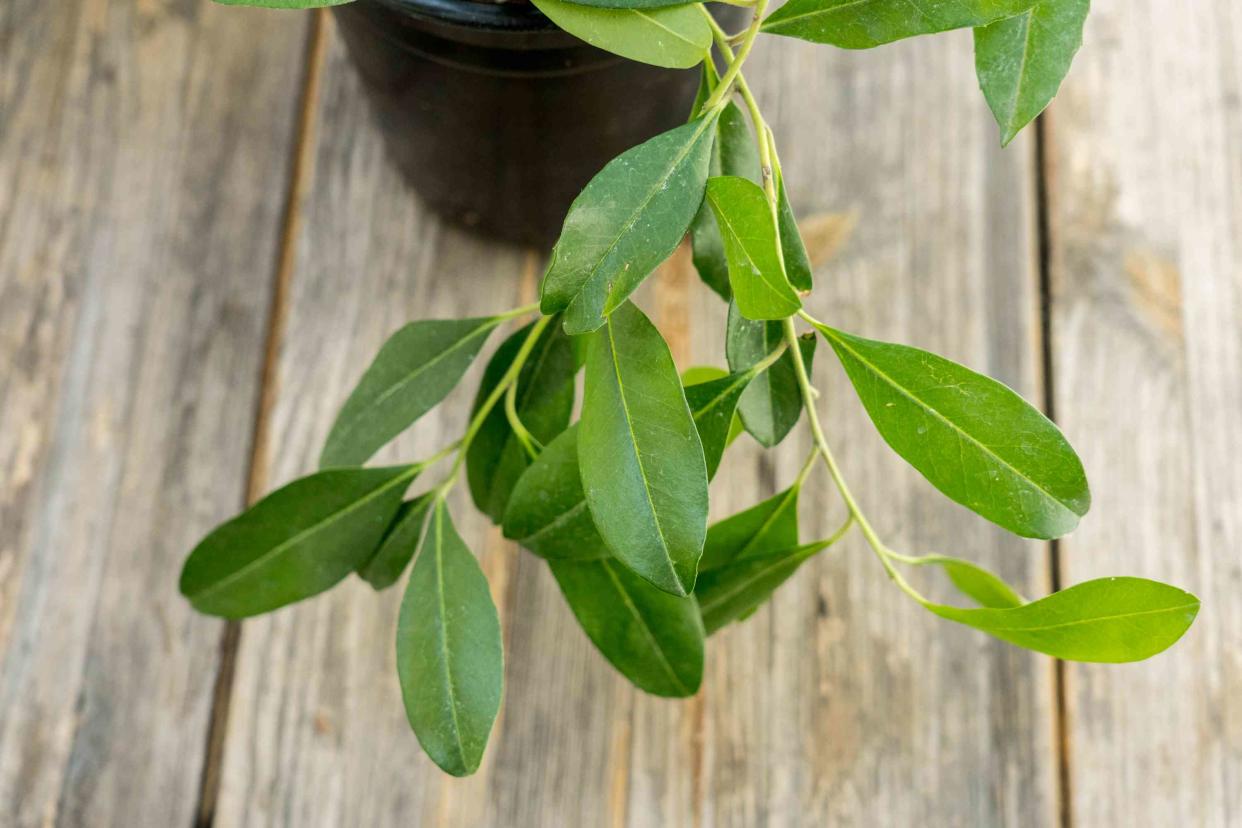
The Spruce / Jayme Burrows
Yerba mate is a subtropical evergreen tree known for its caffeine-infused thick dark leaves used for tea but also as a houseplant. The plant is grown for its leaves but it does produce fragrant small greenish-white flowers that may blossom in the late fall and early winter. Yerba mate can be grown successfully indoors in pots with well-drained soil, bright light, and medium to high humidity but it has pretty specific requirements for outdoor planting. Unless you live in a very hot and humid region that receives plenty of rainfall, it's not going to be suited to your garden so it's best to grow it indoors if you can keep the temperature above 60 degrees Fahrenheit all year.
Common Name | Yerba mate plant, maté, yerba matá, Paraguay tea, Alex paraguayensis |
Botanical Name | Ilex paraguariensis |
Family | Aquifoliaceae |
Plant Type | Evergreen tree/shrub |
Mature Size | 40 ft. outdoors, 5 ft. indoors as houseplant |
Sun Exposure | Full sun/partial shade |
Soil Type | Tolerates a variety but should be well-drained |
Soil pH | Slightly acidic but tolerates a variety |
Bloom Time | Late fall, early winter |
Flower Color | Greenish-white (not grown for flowers) |
Hardiness Zones | 9-10 outdoors (USDA) |
Native Area | Subtropical regions of South America |
Yerba Mate Care
Here are the main care requirements for growing yerba mate.
Grow indoors for best results.
Put a yerba mate houseplant on a bright and sunny windowsill.
Choose rich, loamy, well-drained but moist soil.
Water regularly because yerba mate prefers to stay consistently moist but not soggy.
Keep indoor humidity level above 50 percent or more and temperatures above 60 degrees Fahrenheit.
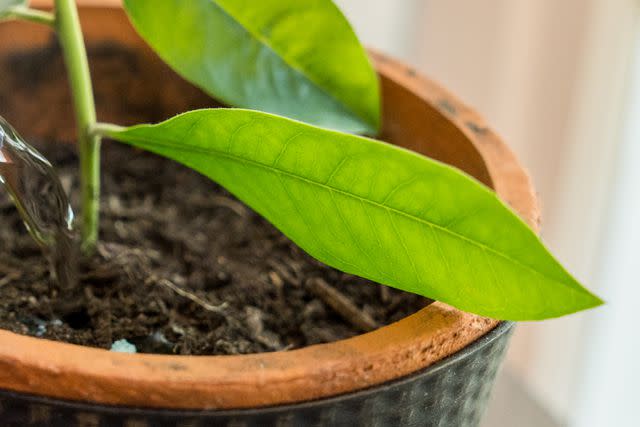
The Spruce / Jayme Burrows
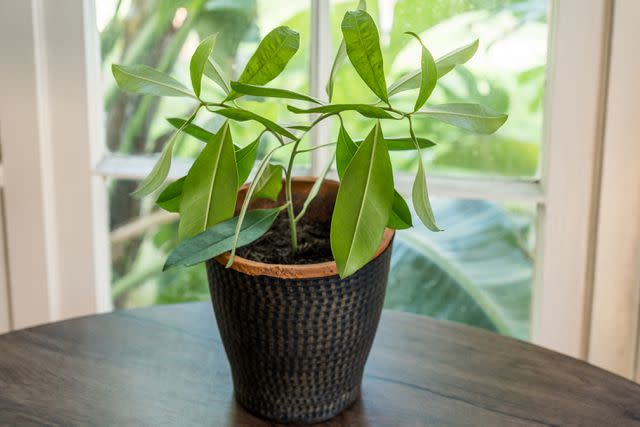
The Spruce / Jayme Burrows
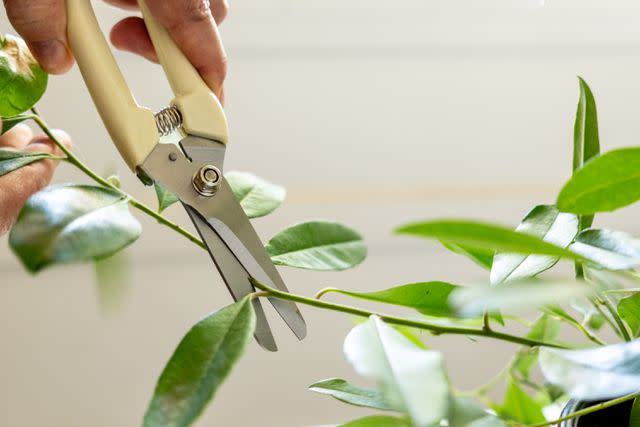
The Spruce / Jayme Burrows
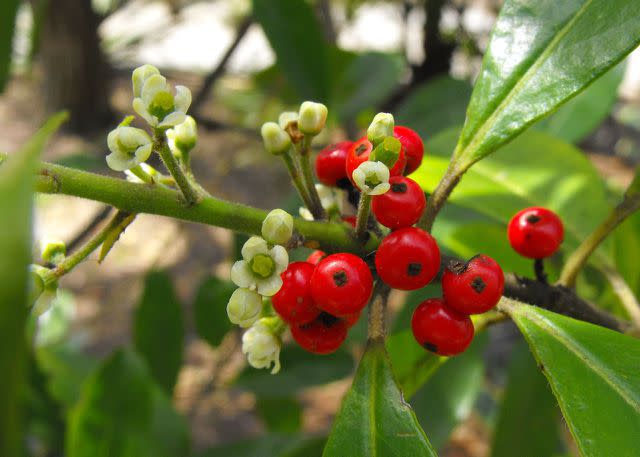
Light
A yerba mate plant isn't going to thrive in a very shady spot in the garden or indoors. It does best in full sunlight. Yerba mate can also cope with partial shade if the temperatures are tropical enough.
Soil
The yerba mate plant prefers a rich, loamy, well-drained soil that absorbs and retains moisture well.
Water
Your yerba mate needs consistently moist conditions, and you shouldn't let the soil dry out. This is not a drought-tolerant plant.
Temperature and Humidity
Yerba mate likes warmth and humidity, indoors and out. Outdoors, the plant will only thrive if the temperatures stay above 60 degrees Fahrenheit for most of the year. It can tolerate slightly lower temperatures for short periods. When winter temperatures dip below 40 degrees Fahrenheit, this could kill a yerba mate plant.
Indoors, the plant prefers humid, moist heat. However, it can tolerate humidity levels down to around 50 percent. A yerba mate plant won't survive in overly dry environments.
Fertilizer
Seedlings will benefit from regular fertilization while they are becoming established.
Pruning
Pruning yerba mate encourages a full and healthy growth but the leaves can start to grow outwards excessively if they aren't cut back. Regularly prune your indoor yerba mate plant to prevent it from becoming too tall or wide.
Propagating Yerba Mate
It's easiest to propagate yerba mate from cuttings. Take these steps.
Select a semi-wood, mature cutting from your yerba mate plant during the late summer.
Dip the cutting in rooting hormone.
Plant the cutting in a pot with perlite and peat moss.
Put the pot on a windowsill that gets at least four hours of sun a day and water weekly.
How to Grow Yerba Mate From Seed
Growing yerba mate from seeds can be a long and challenging task. It's best to plant seeds quickly after harvesting to prevent them from losing their ability to germinate. Even with the right timing and conditions, success isn't guaranteed. The seeds aren't readily available in garden centers, either.
If you choose to harvest seeds and then grow them into seedlings, take these steps:
Seeds need to go through a cold stratification process if you are not planting right after harvesting.
After the cold stratification process, plant seeds in pots with loose, loamy soil.
Keep seeds in pots in a sheltered and warm environment, like a greenhouse.
Keep the seedlings out of harsh, direct sunlight, even in a greenhouse.
Look for rooting in about 12 months. Don't expect blooms until a few years after germination.
Potting and Repotting Yerba Mate
Unless you have the right climate, the slow-growing yerba mate plant is best suited to being grown in a container indoors. The plant will thrive if it is positioned in a sunny spot and kept moist. Choose a glazed pot that can hold the soil's moisture but you will need to make sure there are plenty of drainage holes to help the soil drain fast. Do not pot the plant too deep in the soil to allow the new growth to shoot off freely from the stem.
Common Pests
Indoors, yerba mate doesn't face many pest or plant disease problems. Just be on the lookout for common insects, such as aphids and spider mites. To alleviate these pests, gently spray the plant with water, remove insects by hand for small infestations, or apply neem oil as a natural insecticide.
Common Problems With Yerba Mate
Growing this houseplant is not always easy, but if it's happy, it won't require much maintenance. However, be on the lookout for these rare issues:
Yellowing Leaves
Yerba mate likes soil that's a bit acidic. Yellowing leaves may indicate the soil is too alkaline or even neutral.
Leaf Drop
The plant may be overwatered. To confirm this, slip the plant out of the pot to see if the bottom is very wet. If so, gently dab the plant's roots with an old towel. The indoor climate may also be too dry so try putting the plant on a pebble tray (avoid wet feet, however) or misting the leaves occasionally to see if that works.
Frequently Asked Questions
Can you grow yerba mate in the U.S.?
Yerba mate is a relatively rare plant in the United States though it is increasingly available to buy online. It is known to grow in Hawaii but it can only grow outdoors where the temperature and humidity are very high. If you live in tropical conditions, you can try growing yerba mate outdoors. Otherwise, if you can find seeds or a cultivated plant, it will do best as a houseplant.
How long does it take to grow yerba mate?
It can take about a year for a seed to germinate. This is a very slow-growing plant and it will take about five years before the leaves are ready for tea-making, if that's your intention. Otherwise, enjoy the foliage and blooms.
What kind of soil does a yerba mate need?
Yerba mate plants require rich, loose, and loamy soil that retains moisture and is a bit on the acidic side.
Read the original article on The Spruce.

